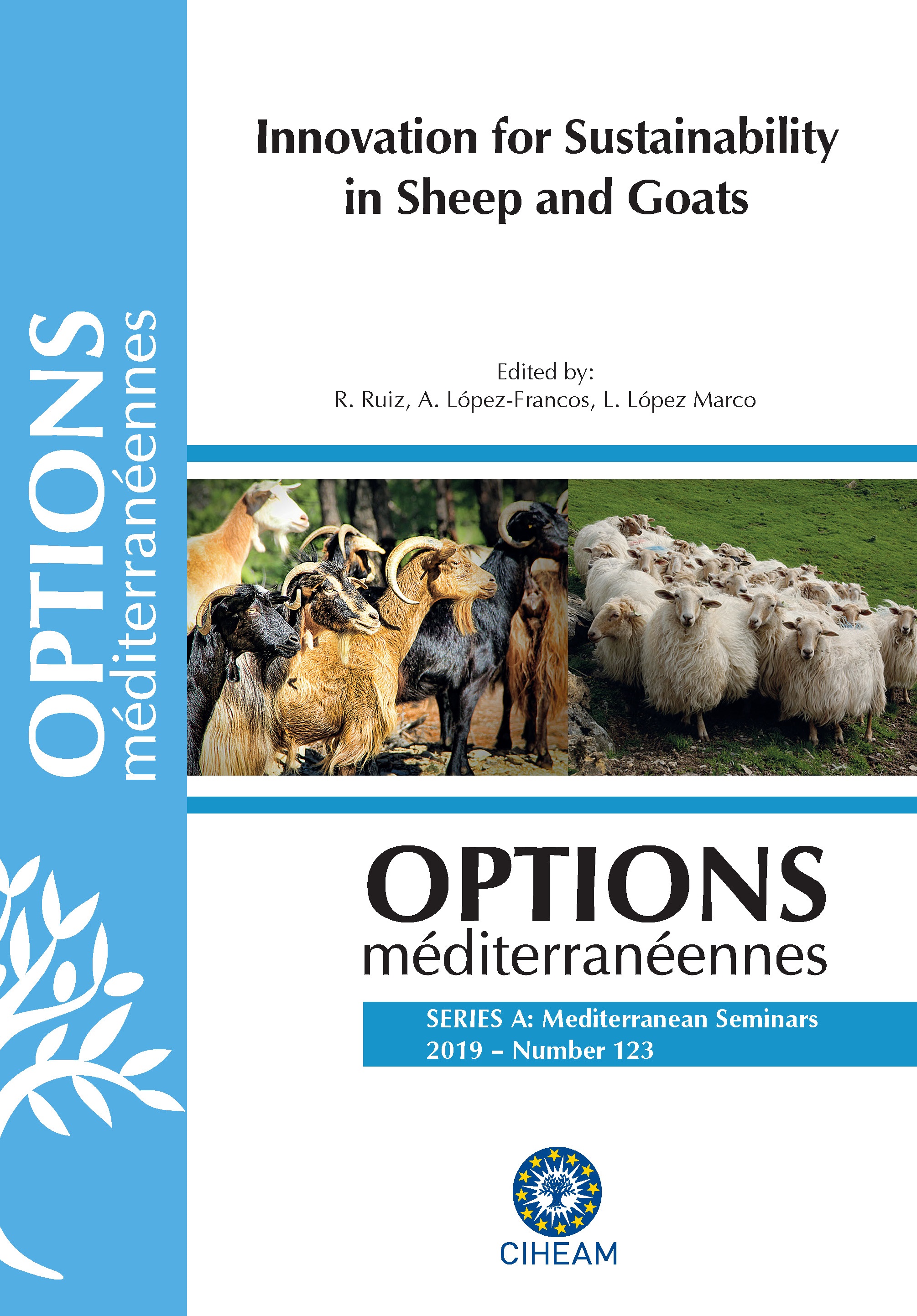| Article précédent | p. 241-245 | Article suivant |
Adaptation of sheep breeding systems to changes in the Algerian steppe context: Case of the region of M’Sila
The Algerian steppe extends over an area of 20 million hectares (rainfall between 100 and 400 mm/year). It supports a grazed ecosystem whose balance had been found by local populations, in particular through movements of animals (Achaba and Azzaba). But for about half a century, the steppe knew many socio-economic and environmental changes, of which the most notable: (i) the depletion of naturals pastures, as a result of the degradation of the steppe rangelands, (ii) an accelerated demographic growth, which is reflected in an increase in household needs and the necessity to find a satisfactory income for the family, and (iii) economic instability, especially the arrival of imported livestock feed. And despite the upheaval which the steppe knew, the breeders still keep the activity of sheep breeding and herd numbers are constantly increasing. Hence the need for making studies to understandthe dynamics of the breeding systems, very important element in the implementation of development programs. In this study, we are interested in the analysis of the different mechanisms of flexibility and adaptation of sheep breeding in M’Sila region, One of the main wilayas (departments) of the Algerian steppe. We conducted interviews with thirty sheep breeders representing the different breeding systems in the area. After analyzing the results of the undertaken interviews, we noted a wide range of practices of innovations adopted by the breeders facing to the various changes in the socioeconomic and environmental contexts, both nationally and locally. Diversification of sources of income, readjustment of tribal rangelands distribution rules, adaptation of animal feeding to the fodder deficit, are all indications that the present study attempts to clarify.
La steppe algérienne s’étend sur une superficie de 20 millions d’hectares (pluviométrie entre 100 et 400 mm/an). Sur la steppe se greffe un écosystème pâturé dont l´équilibre avait été trouvée par les populations locales, notamment grâce à des mouvements pendulaires des animaux (Achaba et Azzaba). Mais depuis environ un demi-siècle, la steppe a connu de nombreux changements socio-économiques et environnementaux, dont les plus remarquables : (i) l’appauvrissement des pâturages naturels suite à la dégradation des parcours steppique, (ii) une croissance démographique accélérée, qui se répercute par une augmentation des besoins des ménages, et la nécessité de trouver un revenu satisfaisant à la famille, (iii) l’instabilité économique surtout pour l´apparition des aliments de bétails importés. Et malgré tout le bouleversement qu’a connu la steppe, les éleveurs maintien toujours l’activité de l’élevage ovin et les effectifs ne cessent de s’augmenter. D’où la nécessité de faire des études pour comprendre les dynamiques des élevages, élément très important dans la mise en oeuvre de différents programs de développement. Alors, dans cette étude, on s’ est intéressé à l’analyse des différents mécanismes de flexibilité et d’adaptation des élevages ovins dans la région de M’Sila, l’une des principales wilayas (départements) de la steppe algérienne. Pour ce faire, nous avons mené des entretiens auprès de trente éleveurs d’ovins représentant les différents systèmes d’élevage existants dans la région. Après analyse des résultats des suites des enquêtes entreprises, on relève la présence d’une large gamme de pratiques innovantes adoptées par les éleveurs faisant face aux différentes changements socioéconomiques et environnementaux, aussi bien à l’échelle nationale que locale. La diversification des sources de revenu, le réajustement des règles tribales de répartition des terres de parcours, l’adaptation de la conduite alimentaire au regard du déficit des fourragers sont autant d’indices que la présente étude tente d’élucider.
- [ Afficher ]
- [ Télécharger ]
- [ Exporter la citation ]
Vous pouvez télécharger la citation au format :
- [ Imprimer ]
-
Mots-clés
ADAPTATION, ALGERIE, ELEVAGE, OVIN, STEPPECiter cet article
Hadbaoui I., Senoussi A., Huguenin J. Adaptation of sheep breeding systems to changes in the Algerian steppe context: Case of the region of M’Sila. In : Ruiz R. (ed.), López-Francos A. (ed.), López Marco L. (ed.). Innovation for sustainability in sheep and goats. Zaragoza : CIHEAM, 2019. p. 241-245. (Options Méditerranéennes : Série A. Séminaires Méditerranéens; n. 123). 2. Joint Seminar of the Subnetworks on Nutrition and on Production Systems of the FAO-CIHEAM Network for Research and Development in Sheep and Goats, 2017/10/03-05, Vitoria-Gasteiz (Spain). http://om.ciheam.org/om/pdf/a123/00007892.pdf



